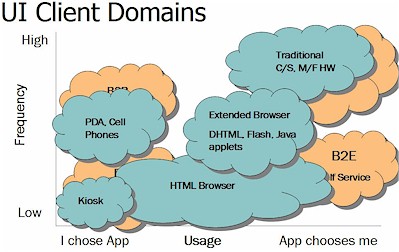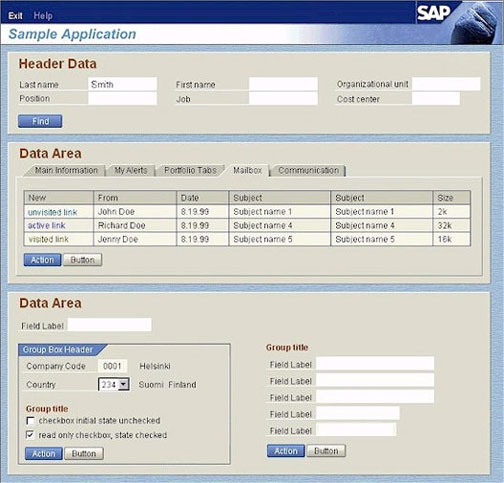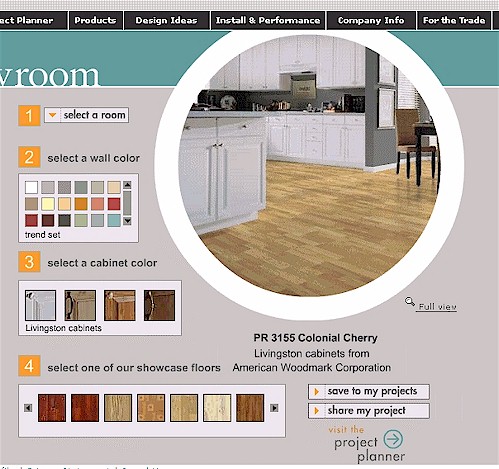Originally published: Jan 01, 2004 Printable PDF Version
Articles Archives

UI Constraints on These Patterns
Good Example (SAP) – Tabs and Data Manipulation
This example illustrates the use of a basic summary/detail form. Yes, this can be done with HTML; however, the page refresh delays associated with each click of a tab in high-volume transactional systems will create excessive network traffic and slow the response time of the system. Users accustomed to sub-second response times of traditional client/server and mainframe applications will often forget data as they move tab to tab or simply avoid navigating to other tabs to avoid the frustrating delays. When implemented as an enterprise Internet application, this type of visual design pattern should enable the development team to tune the application to quickly load the first tab being displayed and asynchronously load secondary tabs as a background task if necessary. In essence, a robust enterprise Internet application should allow you to tune the client deployment load based on the various constraints of the platform, usage models, and network bandwidth.
Good Example (Flash) Visual Floor Selector
This example illustrates a good use of Flash to provide a rich, interactive method to quickly select and display the visual rendering of the selection without making round trips to the server. We feel visual configuration scenarios are one of the best uses of Flash-rich client interfaces.
Right now, the playing field for enterprise Internet applications seems to be falling into a few distinct camps. The following table is a summary of the key things to consider for high-volume transactional Internet applications.
Key Features to Consider for Enterprise Internet Platforms
- Standards-based (XML, J2EE)
- Server-side database integration
- Extend server objects to the GUI
- Support off-line operations on the client
- Support stateful persistent client sessions
- Support for automatic server push to the client
- Support standard security approaches (data encryption, digital certificates, client sandbox)
- Allows a less complex development model
Platform Flavors
A certain amount of “market validation” is occurring as vendors in this area all strive to prove their architectural approach is best for the long term (3 – 5 years). We’re currently performing a detailed analysis of key players in each area and will report on our findings in a later article. For now, here’s a sampling of the flavors and players.
| Presentation Server | Nexaweb, Canoo |
| DHTML/JavaScript | Isomorphic, CanyonBridge |
| Flash | Macromedia, Lazlo |
| Pure Native Client | Curl, Dreamfactory |
| Windows (.Net Winforms) | Microsoft |
Want More Information on Enterprise Internet Applications?
Classic System Solutions has been designing enterprise Internet applications for over a decade, and we are excited to include these solutions in our consulting practice, training, and design guidelines. Give us a call or e-mail jimh@classicsys.com, and we’ll provide you with a detailed set of critical success factors for building enterprise internet applications along with a free usability kit.




